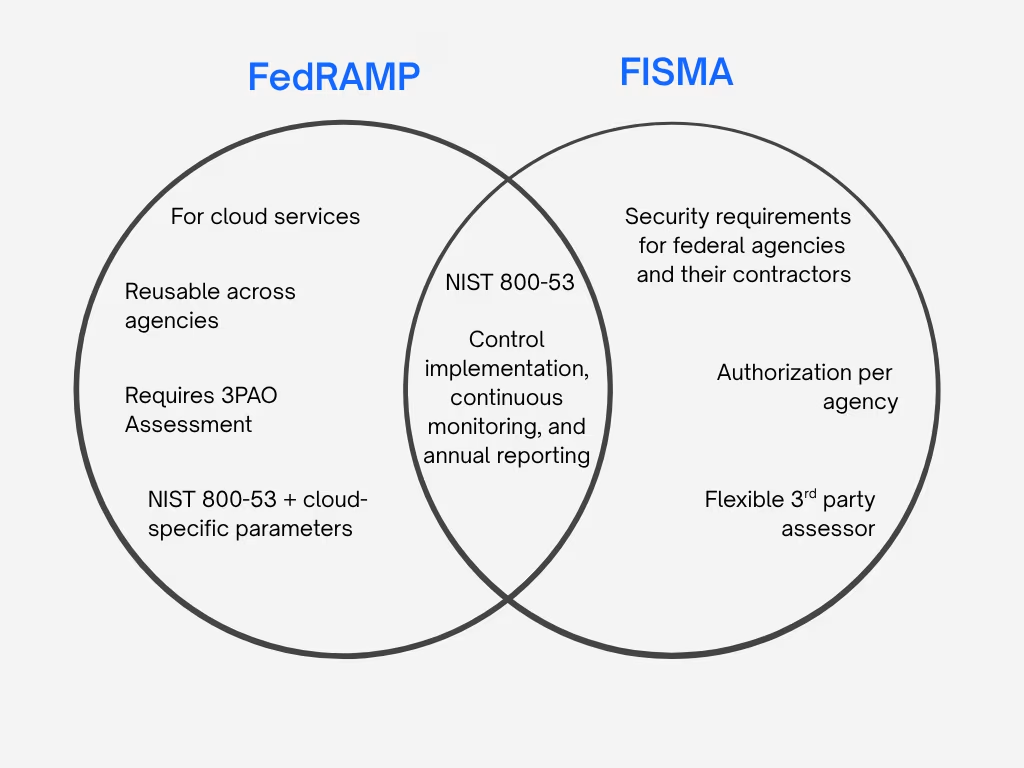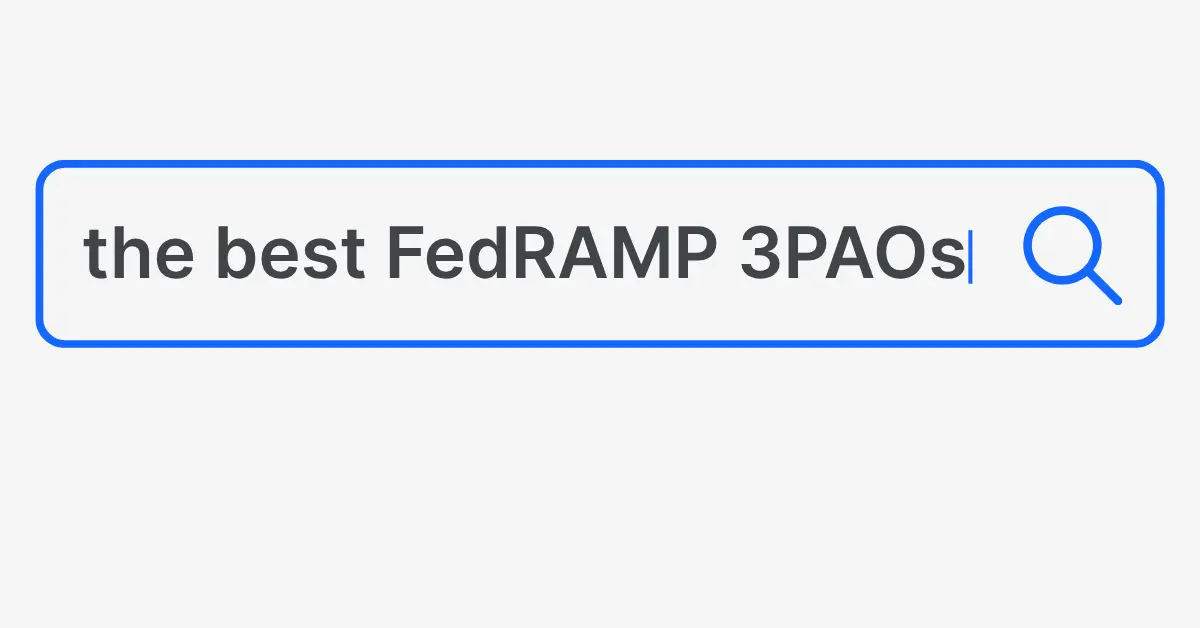In This Article
.webp)
Consider this: The U.S. government is projected to spend over $700 billion on public cloud services this year, up from $595 billion in 2024, according to Gartner.
To secure a share of that market, organizations must navigate FedRAMP or FISMA, two critical frameworks designed to protect government data from escalating cyber threats. Data breaches cost an average of $4.76 million globally — and $9.36 million in the U.S., per recent reports. This means non-compliance isn't just a risk; it's a potential business killer.
This article examines FedRAMP and FISMA frameworks and what makes them different, so you can decide which is most relevant to protect you and your customers’ data.
Main Differences Between FedRAMP and FISMA

FISMA, established in 2002 and updated in 2014, is a federal law requiring agencies and contractors to develop high security standards.
It applies broadly to both on-premises and cloud systems, relying on NIST SP 800-53 controls.
FedRAMP was introduced in 2011 and is specifically for cloud providers looking to sell software to government agencies. It includes added controls and parameters specific to cloud environments.
Scope and Applicability
FISMA encompasses all federal information systems. Compliance is required for agencies, state programs, and contractors handling government data.
For instance, a defense contractor managing unclassified information for a single agency would adhere to FISMA.
FedRAMP is for cloud service providers. It enables a "do once, use many times" model, allowing one authorization to apply across multiple agencies.
Authorization and Assessment Processes
Under FISMA, authorization is agency-specific: Systems are categorized by risk level using FIPS 199. Controls are selected from NIST SP 800-53 and assessments can involve flexible third parties, resulting in an ATO per agency.
FedRAMP requires a certified Third-Party Assessment Organization (3PAO) for independent evaluations, making the process more standardized and stringent.
Controls and Rigor
Both frameworks utilize NIST SP 800-53, but FedRAMP adds cloud-specific enhancements, like safeguards for multi-tenancy.
FISMA permits organization-defined parameters, while FedRAMP standardizes them.
As cybercrime is expected to reach $10.5 trillion by 2025 (per Cybersecurity Ventures), FedRAMP's added rigor provides stronger protection for scalable cloud operations.
Similarities Between FedRAMP and FISMA
FedRAMP and FISMA share a fundamental objective: safeguard government data through NIST's Risk Management Framework.
Both require system categorization (low, moderate, or high impact), control implementation, continuous monitoring, and annual reporting.
The overlap means experience with one can ease adoption of the other, streamlining compliance efforts.
Who Needs FISMA Compliance?
FISMA is mandatory for federal agencies, departments, and their contractors processing government data. This includes state agencies administering federal programs and private firms in sectors like defense or healthcare.
Organizations without federal ties can avoid it, but non-compliance risks severe penalties, such as contract losses or fines, as seen in past breach incidents.
Who Needs FedRAMP Authorization?
FedRAMP is required for cloud service providers (CSPs) offering SaaS, PaaS, or IaaS to federal agencies.
It's essential for those handling government data and seeking multi-agency contracts. Non-cloud or on-premises providers can rely on FISMA.
For example, companies like Palo Alto Networks use FedRAMP to expand their federal reach efficiently.
How to Automate Your FedRAMP or FISMA Process and Documentation
Manual compliance processes are time-intensive and error-prone. Automation tools can significantly improve efficiency for FedRAMP automation or FISMA automation.
The cloud-based platform Paramify automates gap assessments, compliance planning, and documentation, and streamlines implementation for frameworks like NIST 800-53, supporting FISMA cybersecurity and FedRAMP needs.
Steps to Automate Compliance
1. Gap Assessment: Conduct a 60-minute intake to generate a dynamic roadmap.
2. Control Implementation: Use a living dashboard to track progress and apply updates universally.
3. Document Generation: Produce SSPs with one click in OSCAL or human-readable formats.
4. Continuous Monitoring: Automate POA&Ms, integrating with tools like Jira for vulnerability management.
Paramify improves accuracy, reduces SSP creation time from months to days, and achieves 60% faster planning. It's FedRAMP High-ready and ideal for agencies or CSPs.

→ Request a demo of Paramify to explore how it can streamline your compliance.
FedRAMP or FISMA?
In an era of rising threats, excellent security isn't optional; it's the foundation for sustainable growth. FedRAMP and FISMA both protect federal data via NIST standards, but FISMA offers broad, agency-specific coverage, while FedRAMP provides reusable, cloud-focused authorization. FISMA suits general contractors; FedRAMP benefits CSPs scaling across agencies.
Automation is key to managing either effectively. Request a video demo of Paramify today to see how you can automate your FedRAMP or FISMA compliance.
Feel free to reach out with any questions about FedRAMP or FISMA or schedule a live demo to see how automation can help.



